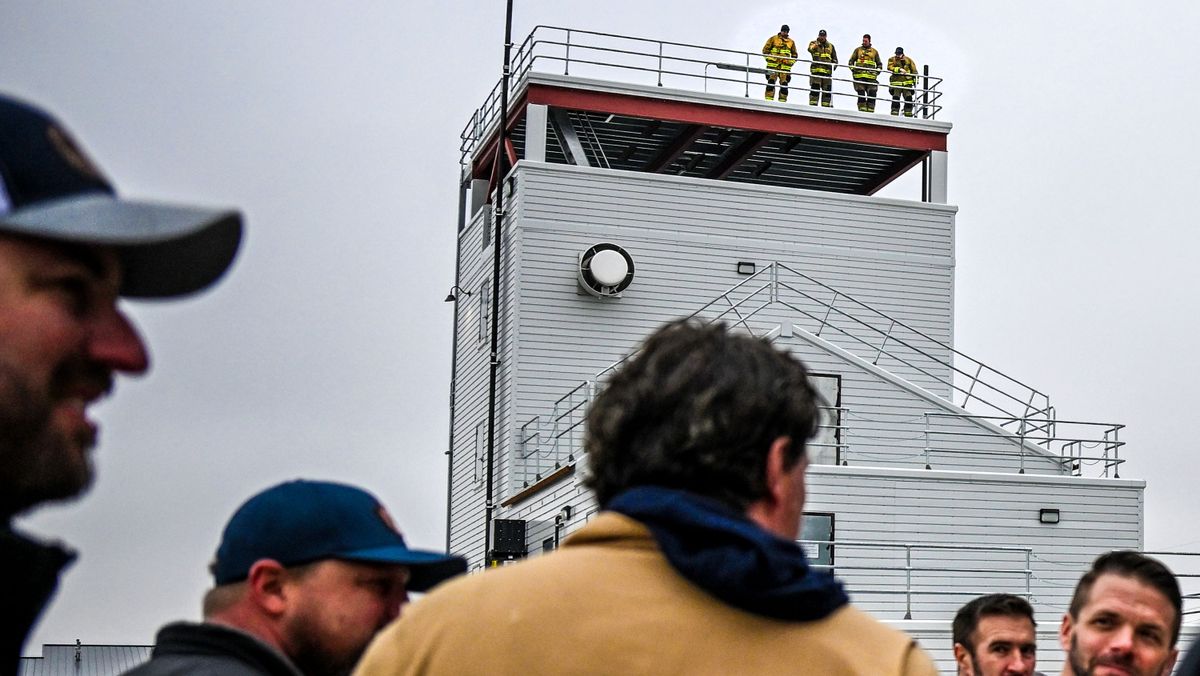Spokane Valley Fire Department celebrates opening of $13 million training center, burn tower

Spokane Valley firefighters climbed a ladder and rescued an adult and child from a burning apartment Thursday afternoon.
At least, that was the training scenario a group of firefighters executed shortly after Spokane Valley Fire Commissioner Mike Kester, with other fire commissioners and leaders at his side, cut a large red ribbon to officially open the new $13 million training center and burn tower.
The training exercise Thursday is one of many Spokane Valley firefighters and other fire agencies across the region can practice at the new digs just east of the Barker Road and Garland Avenue intersection.
The training center will allow firefighters and other first responders to hone their skills, practice life-saving techniques and train with cutting-edge equipment that mirrors real-world conditions, Spokane Valley Fire Commissioner Patrick Burch said.
“This training facility is more than just a building, it is a symbol of our community’s dedication to safety,” Burch told a small audience that attended the ribbon-cutting ceremony.
The facility and burn tower were funded by a $113 million maintenance and operations levy voters passed in 2019. The levy funds firefighter salaries, operating expenses, maintenance, equipment and other capital projects.
Deputy Fire Chief Tom Hatley told reporters the training center took one year to build and was completed in July. Construction on the burn tower started in July, and the finishing touches were expected to be finished Friday.
A vehicle maintenance facility next to the burn tower was also recently built.
The 13,000-square-foot training center includes a fire truck bay and an indoor training area for firefighters. The training area consists of a two-story residential house layout equipped with furniture and other items to create a real-world scene.
On Thursday, firefighters deployed smoke into the residence to simulate a burning structure. Firefighters then climbed a stairwell to search for victims. Other firefighters ascended a ladder, crawled into a window and went back down the ladder with two mannequins they pulled from the building.
The fire truck bay is also large enough to hold firefighter graduations and other ceremonies, as well as teach large classes.
Classrooms, locker rooms, a decontamination area to remove toxins from gear after training, self-contained breathing apparatus bottle filling stations, offices and a small workout gym fill the remaining spaces of the center.
The department’s old training facility didn’t have locker rooms, a decontamination area or bottle filling stations, Hatley said.
He said the six-story burn tower, which allows firefighters to train in a real fire situation, will provide more training options than its current tower built in 1986. The burn tower includes a space for a simulated garage fire, which Hatley said he has never seen in other burn towers.
Karl Cantrell, division chief of training, said he traveled the country examining training centers and burn towers and chatted with other training division chiefs about what they liked and disliked about their facilities.
“I took everything they liked and we put it in here,” Cantrell said.
The tower offers high-rise building fire, technical rescue, search and rescue and other types of training. Hatley said the tower has eight burn rooms, which doubles the amount of rooms of other burn towers and allows for more diverse training.
“I can’t even believe half the stuff that this place does,” Fire Chief Frank Soto Jr. said at the ribbon-cutting ceremony. “It’s an incredible, brand new facility.”
Burch said the importance of the new facility cannot be overstated, and the impact will extend beyond the fire department.
“It will have a ripple effect for the safety and well-being of our entire region,” he said.